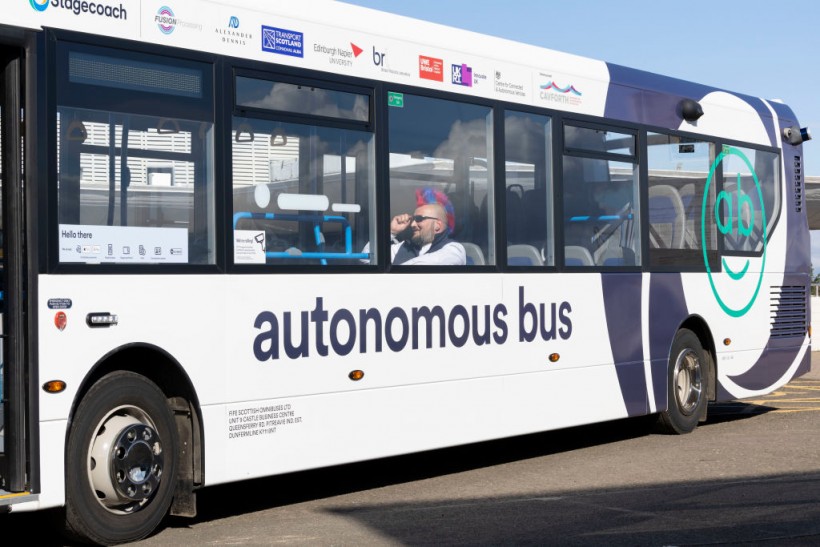Britain has now met a historic milestone as the self-driving bus was tested a few days before and is set to be launched in Scotland this Monday.

EDINBURGH, SCOTLAND - MAY 11: Driver Stuart Doidge is on board the new self-driving bus on May 11, 2023, in Edinburgh, Scotland. Starting May 15, a set of five autonomous, single-decker buses will travel a route between the Ferrytoll park-and-ride in Fife and the Edinburgh Park train and tram interchange. The vehicles will travel on designated roads at up to 50 mph, despite being driverless and will have two staff onboard.
UK's First Self-Driving Bus
MailOnline reports that during its initial trial, the autonomous bus carried some passengers over a 14-mile route through the Forth Road Bridge. During this trial, only two staff members were reportedly on board: one ticket seller and a safety driver to handle the bus if necessary.
The service, comprising a fleet of five buses, will be officially launched on Monday and will continue for two years until 2025.
According to the Evening Standard, paying passengers may ride the bus service, known as AB1, to travel through the routes between Ferrytoll Park and Ride in Fife to Edinburgh Park Transport Interchange.
Sam Greer, the director of Stagecoach, a bus company that collaborated on the project, explains that those cautious about riding the bus should not be worried as a complex safety case has been worked on. Greer adds that the bus has been confirmed to be safe for public usage, as reported by MailOnline.
Fusion Processing, the firm behind the technology, notes that, by far, the route was the world's most ambitious and complex, as reported by the Scotsman.
Peter Stephens, the policy director, also notes that the project's goal was not to cut costs but to examine how technology could prompt drivers to focus on other tasks and roles. He adds that these buses could become more attractive to the younger ones by fostering interaction between passengers and staff.
MailOnline reports that these buses have already undergone a million miles' worth of test drives.
The project has reportedly been in development for a decade. It was initially announced in 2018 and was supposed to be launched in 2021. However, its deployment was postponed for several reasons, including the unforeseen COVID-19 pandemic.
ALSO READ: Self-Driving Lab Polybot Helps Search New Materials for Sustainable Energy
How the Self-Driving Buses Work
This may appear worrisome to others, but self-driving buses will not operate independently. They can also move at a maximum speed of only 50 mph and work in mixed traffic. The Scotsman also adds that a safety driver will remain close to the wheel. However, throughout most of the buses' routes, these buses will be navigating autonomously.
There will be computers dedicated to the steering and control of the bus. If necessary, brakes will also be applied. Officials note that self-driving buses will have faster reactions compared to drivers.
Sensors can also be found on the buses' exterior. These sensors are linked to the automated drive system that Fusion Processing has created and will be able to pick up other vehicles and obstacles.
Mr. Greer explains that they will look into the data, feedback, and reactions of the passengers and the general public. After that, they will decide how the technology will be used.
RELATED ARTICLE: Self-Driving Tractor Can Be Controlled Using Smartphones, Will Driverless Equipment Become New Trend?
Check out more news and information on Tech & Innovation in Science Times.














